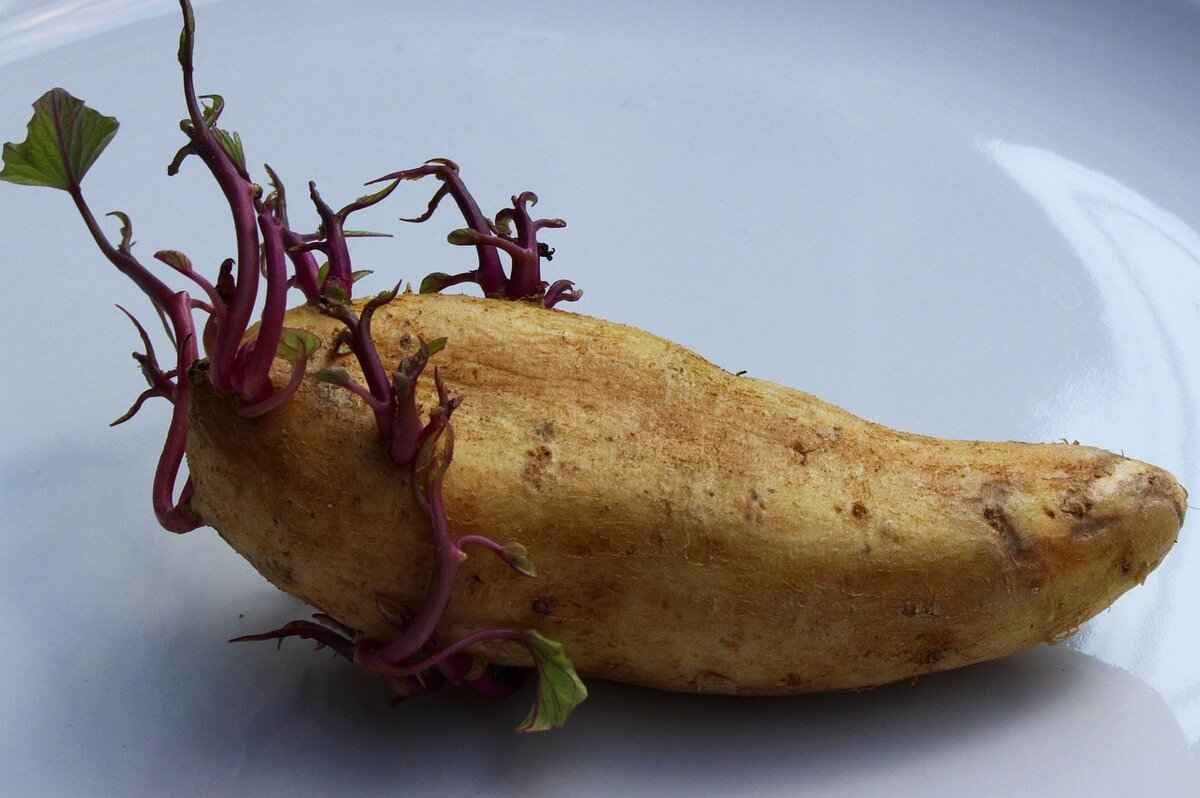This article explores the compatibility of chia seeds with the ketogenic diet, examining their nutritional profile, health benefits, and practical ways to incorporate them into a low-carb lifestyle.
What Are Chia Seeds?
Chia seeds are tiny, nutrient-dense seeds derived from the Salvia hispanica plant. They are rich in omega-3 fatty acids, fiber, protein, and essential minerals, making them a popular choice for those seeking to enhance their diet. Their versatility and health benefits have made them a staple in various dietary regimens, including the ketogenic diet.
Are Chia Seeds Low in Carbs?
Yes, chia seeds are remarkably low in net carbohydrates. A typical serving of 28 grams (about 2 tablespoons) contains approximately 12 grams of carbohydrates, but due to their high fiber content (around 10 grams), the net carbs are only about 2 grams. This makes them an excellent choice for anyone looking to maintain a low-carb lifestyle.
How Do Chia Seeds Fit into a Keto Diet?
Incorporating chia seeds into a keto diet can enhance meal variety and provide essential nutrients. Their unique properties allow them to be used in various recipes while maintaining low carbohydrate levels. They can be added to smoothies, salads, or used to create delicious puddings, making them a versatile ingredient in your keto meal plan.
Chia Seeds and Fiber Content
The high fiber content of chia seeds can aid digestion and promote a feeling of fullness, which is particularly beneficial for those on a keto diet. Fiber helps regulate blood sugar levels and may prevent spikes, making it easier to adhere to a low-carb lifestyle.
Soluble vs. Insoluble Fiber
Chia seeds contain both soluble and insoluble fiber. Soluble fiber can help lower cholesterol levels and improve heart health, while insoluble fiber promotes digestive health by adding bulk to the stool. Understanding these differences can help you appreciate the comprehensive health benefits of chia seeds.
Impact on Digestive Health
Chia seeds can significantly improve digestive health by promoting regularity and preventing constipation, a common concern for those on low-carb diets. Their ability to absorb water and expand in the stomach can help you feel full longer, reducing the temptation to snack on high-carb foods.
Health Benefits of Chia Seeds
- Heart Health: The omega-3 fatty acids in chia seeds support cardiovascular health by reducing inflammation and lowering blood pressure.
- Weight Management: Their high fiber and protein content can help manage hunger and promote weight loss.
- Antioxidant Properties: Chia seeds are rich in antioxidants, which can protect your body from oxidative stress and inflammation.
How to Incorporate Chia Seeds into Your Diet?
There are numerous creative ways to include chia seeds in your meals:
- Chia Seed Pudding: Combine chia seeds with almond milk and let them soak overnight for a delicious, low-carb breakfast.
- Chia Seeds in Smoothies: Add chia seeds to your favorite smoothie for an extra nutritional boost without adding carbs.
Are There Any Risks Associated with Chia Seeds?
While chia seeds are generally safe for most people, it is essential to be aware of potential risks. Some individuals may experience allergic reactions, leading to symptoms such as itching or swelling. Additionally, consuming chia seeds in large quantities may cause digestive discomfort. It’s advisable to introduce them gradually into your diet.
Allergic Reactions to Chia Seeds
Although rare, some people may have allergic reactions to chia seeds. Symptoms can vary from mild to severe, so it’s crucial to monitor your body’s response when trying them for the first time.
Digestive Issues and Chia Seeds
For some individuals, consuming chia seeds in excess can lead to digestive discomfort. To avoid this, start with small amounts and gradually increase your intake as your body adjusts.

What Are Chia Seeds?
Chia seeds are small, nutrient-rich seeds that come from the Salvia hispanica plant, native to Mexico and Guatemala. Known for their impressive health benefits, these tiny seeds have gained immense popularity among health enthusiasts, athletes, and individuals following various dietary regimens. Their versatility and ease of incorporation into meals make them a sought-after superfood.
These seeds are typically black or white and are celebrated for their high nutrient density. Just a single ounce (about 28 grams) of chia seeds contains approximately 138 calories, 9 grams of fat, 12 grams of carbohydrates (of which 11 grams are fiber), and 4 grams of protein. This unique nutritional profile makes them an attractive option for those seeking to enhance their diet with whole foods.
The term superfood is often used to describe foods that offer exceptional health benefits, and chia seeds fit this description perfectly. They are rich in essential nutrients, including omega-3 fatty acids, antioxidants, fiber, and various minerals such as calcium, magnesium, and phosphorus. These components contribute to overall health and wellness.
One of the standout features of chia seeds is their high fiber content. With around 11 grams of fiber per ounce, they can significantly aid in digestion. Fiber is crucial for maintaining regular bowel movements and preventing constipation. The soluble fiber in chia seeds absorbs water and forms a gel-like substance in the stomach, which can help you feel fuller for longer and regulate appetite.
Chia seeds are an excellent source of omega-3 fatty acids, particularly alpha-linolenic acid (ALA). These healthy fats are known to support heart health by reducing inflammation and lowering blood pressure. Regular consumption of chia seeds may also help to improve cholesterol levels, further contributing to cardiovascular health.
Incorporating chia seeds into your diet is simple and versatile. Here are a few popular methods:
- Chia Seed Puddings: Combine chia seeds with your choice of milk or dairy alternative, sweeten to taste, and let it sit overnight. The result is a delicious and nutritious pudding.
- Smoothies: Add a tablespoon of chia seeds to your smoothies for an extra boost of nutrients without significantly increasing the carb count.
- Baking: Chia seeds can be added to baked goods like muffins and bread, enhancing their nutritional profile.
- Salads and Yogurt: Sprinkle chia seeds on salads or mix them into yogurt for added crunch and nutrition.
While chia seeds are generally safe for most people, there are a few considerations to keep in mind. Some individuals may experience allergic reactions to chia seeds, leading to symptoms such as itching or swelling. Additionally, consuming large quantities without adequate hydration can cause digestive discomfort due to their high fiber content.
To enjoy the benefits of chia seeds, it is recommended to start with a small amount and gradually increase your intake, ensuring that you drink plenty of water throughout the day.
In summary, chia seeds are a nutrient-dense superfood that can enhance your overall health and well-being. Their versatility in recipes and impressive health benefits make them a valuable addition to any diet.

Are Chia Seeds Low in Carbs?
When it comes to maintaining a ketogenic diet, understanding the carbohydrate content of the foods you consume is crucial. One food that stands out in this regard is chia seeds. These tiny seeds are not only low in carbohydrates but also packed with essential nutrients, making them an excellent addition to a keto-friendly lifestyle.
Chia seeds are remarkably low in net carbohydrates, with approximately 1 gram of net carbs per ounce (28 grams). This makes them an ideal choice for anyone looking to reduce their carb intake while still enjoying a variety of foods. The majority of the carbohydrate content in chia seeds comes from fiber, which is not digested by the body, thus contributing to their low net carb count.
In fact, chia seeds contain about 11 grams of fiber per ounce, which helps offset the total carbohydrate content. This high fiber content is essential for maintaining digestive health, especially for those adhering to a ketogenic diet. Fiber aids in digestion, promotes feelings of fullness, and helps regulate blood sugar levels.
Incorporating chia seeds into your diet can enhance your meals in various ways. Here are some key benefits:
- Versatility: Chia seeds can be added to smoothies, salads, and baked goods, allowing for creative meal options.
- Hydration: When soaked in liquid, chia seeds expand and form a gel-like consistency, which can help keep you hydrated.
- Nutrient Density: Besides being low in carbs, chia seeds are rich in omega-3 fatty acids, protein, and various minerals.
There are numerous ways to incorporate chia seeds into your meals:
- Chia Seed Pudding: Combine chia seeds with almond milk and your favorite sweetener for a delicious pudding.
- Smoothies: Add a tablespoon of chia seeds to your smoothie for an extra nutrient boost without significantly increasing carbs.
- Baking: Use chia seeds as an egg substitute in baking by mixing them with water to create a gel.
While chia seeds offer numerous health benefits, it’s essential to be aware of potential risks:
- Allergic Reactions: Some individuals may experience allergic reactions, which can manifest as itching or swelling.
- Digestive Issues: Consuming large amounts of chia seeds without adequate hydration may lead to digestive discomfort. It’s advisable to start with small quantities and gradually increase your intake.
Overall, chia seeds are an excellent addition to a ketogenic diet due to their low carbohydrate content and high nutritional value. Understanding how to incorporate them into your meals can help you enjoy a diverse and satisfying diet while staying within your carb limits.

How Do Chia Seeds Fit into a Keto Diet?
When it comes to the ketogenic diet, variety and nutritional value are essential. One superfood that fits seamlessly into this low-carb lifestyle is chia seeds. These tiny seeds not only enhance meal variety but also offer a plethora of essential nutrients, making them a perfect addition to your keto diet.
Incorporating chia seeds into a keto diet can significantly enhance meal variety and provide essential nutrients. Their unique properties allow them to be used in various recipes while maintaining low carbohydrate levels. But how exactly do chia seeds contribute to a keto-friendly meal plan?
Chia seeds are packed with essential nutrients, including omega-3 fatty acids, proteins, and minerals such as calcium and magnesium. A typical serving of chia seeds (about 28 grams) contains:
| Nutrient | Amount |
|---|---|
| Calories | 138 |
| Net Carbs | 1 gram |
| Fiber | 11 grams |
| Protein | 4 grams |
| Fat | 9 grams |
This nutrient profile makes chia seeds an excellent choice for those on a keto diet, as they are low in net carbs while being high in fiber and healthy fats.
One of the biggest challenges of adhering to a ketogenic diet is maintaining meal variety. Chia seeds can be incorporated into various dishes, making them a versatile ingredient. Here are some popular ways to use chia seeds:
- Chia Seed Pudding: Combine chia seeds with unsweetened almond milk and let them sit overnight to create a delicious pudding.
- Smoothies: Add chia seeds to your favorite low-carb smoothies for an extra boost of nutrition.
- Baking: Use chia seeds as an egg substitute in keto-friendly baking recipes.
- Salads: Sprinkle chia seeds on salads for added crunch and nutrients.
These options not only add variety but also enhance the overall nutritional profile of your meals.
Chia seeds are an excellent source of dietary fiber, which plays a crucial role in digestive health. The high fiber content helps promote a sense of fullness, making it easier to manage hunger while following a ketogenic diet. In fact, the soluble fiber in chia seeds can absorb water, expanding in your stomach and aiding in digestion.
Beyond their compatibility with a keto diet, chia seeds offer numerous health benefits:
- Heart Health: The omega-3 fatty acids in chia seeds can contribute to improved cardiovascular health.
- Weight Management: The combination of fiber and protein can help regulate appetite and support weight loss.
- Antioxidant Properties: Chia seeds are rich in antioxidants, which help combat oxidative stress.
These benefits make chia seeds a valuable addition to any diet, especially for those looking to maintain a healthy lifestyle.
In summary, chia seeds are an excellent choice for those following a ketogenic diet. Their low carbohydrate content, high fiber levels, and versatile nature make them a perfect ingredient for enhancing meal variety while providing essential nutrients. By incorporating chia seeds into your meals, you can enjoy the benefits of this low-carb superfood while adhering to your keto lifestyle.
Chia Seeds and Fiber Content
Chia seeds are often hailed as a superfood due to their impressive nutritional profile. Among their many benefits, one of the most notable features is their high fiber content. This article will delve into how chia seeds can significantly contribute to digestive health and aid in appetite management, particularly for those following a ketogenic diet.
Fiber is an essential component of a healthy diet, playing a critical role in maintaining digestive health. It helps to regulate bowel movements, prevent constipation, and may even lower the risk of certain diseases. Incorporating fiber-rich foods like chia seeds can be particularly beneficial for those on low-carb diets.
Chia seeds are remarkably high in fiber, containing about 11 grams of fiber per ounce (28 grams). This high fiber content can promote a feeling of fullness, which is especially advantageous for individuals trying to manage their weight or adhere to a ketogenic diet. The fiber in chia seeds can absorb water and expand in your stomach, leading to increased satiety.
The fiber in chia seeds is predominantly soluble, which means it dissolves in water to form a gel-like substance. This property can help slow down digestion and the absorption of nutrients, providing a steady release of energy. Additionally, the gel-like consistency can help to bulk up stool, aiding in regular bowel movements and preventing constipation. For those on a low-carb diet, where fiber intake can sometimes be insufficient, chia seeds offer a practical solution.
One of the challenges of following a ketogenic diet is managing hunger due to the limited carbohydrate intake. Chia seeds can be a valuable ally in this regard. The fiber content not only promotes fullness but also stabilizes blood sugar levels, reducing the likelihood of hunger pangs throughout the day. This can make it easier to stick to your dietary goals without feeling deprived.
- Soak Them: Soaking chia seeds in water or your favorite beverage before consumption can enhance their digestibility and maximize their health benefits.
- Add to Smoothies: Incorporating chia seeds into smoothies can boost their fiber content while keeping the overall carbohydrate count low.
- Chia Pudding: Create delicious chia pudding by mixing seeds with almond milk or coconut milk, allowing them to absorb the liquid overnight.
While chia seeds are beneficial, it’s important to consume them in moderation. For some individuals, especially those unaccustomed to a high-fiber diet, consuming large amounts of chia seeds can lead to digestive discomfort, including bloating and gas. It’s advisable to start with a small amount and gradually increase your intake to allow your digestive system to adjust.
Incorporating chia seeds into your diet can significantly enhance your fiber intake, aiding digestion and helping to control appetite. Their unique properties make them an excellent addition to a ketogenic lifestyle, providing essential nutrients while keeping carbohydrate levels low. As with any dietary change, it’s important to listen to your body and adjust your intake accordingly.
Soluble vs. Insoluble Fiber
When it comes to understanding the nutritional benefits of chia seeds, one of the key components to consider is their fiber content. Fiber is essential for maintaining a healthy digestive system, and chia seeds are a rich source of both soluble and insoluble fiber. Knowing the difference between these two types of fiber can significantly enhance your appreciation for how chia seeds contribute to gut health and overall well-being.
Soluble fiber dissolves in water, forming a gel-like substance in the digestive tract. This type of fiber is known for its ability to help lower blood cholesterol levels and regulate blood sugar levels. Foods high in soluble fiber can slow down digestion, which promotes a feeling of fullness and can aid in weight management. In chia seeds, soluble fiber accounts for a significant portion of their total fiber content, making them an excellent choice for those looking to improve their heart health and manage their weight.
On the other hand, insoluble fiber does not dissolve in water. Instead, it adds bulk to stool and helps food pass more quickly through the stomach and intestines. This type of fiber is crucial for maintaining regularity and preventing constipation. Chia seeds contain a notable amount of insoluble fiber, which can be particularly beneficial for individuals on low-carb diets, as it aids in digestive health without adding significant calories.
The combination of soluble and insoluble fiber in chia seeds creates a synergistic effect that enhances digestive health. While soluble fiber helps to regulate digestion and cholesterol, insoluble fiber ensures that the digestive system remains active and efficient. Together, they contribute to a balanced diet that supports gut health.
Incorporating both types of fiber into your diet is essential for maintaining a healthy gut microbiome. A diverse gut microbiome is linked to improved digestion, better immunity, and even mental health benefits. Chia seeds, with their unique fiber composition, can play a vital role in nurturing this microbiome, making them a valuable addition to any diet.
- Add to Smoothies: Blend chia seeds into your smoothies to boost fiber content without altering the flavor significantly.
- Make Puddings: Soak chia seeds in almond milk or coconut milk to create a delicious and nutritious pudding.
- Sprinkle on Salads: Use chia seeds as a crunchy topping on salads, adding both texture and fiber.
- Bake with Them: Incorporate chia seeds into baked goods like muffins and bread for added nutrition.
In conclusion, understanding the difference between soluble and insoluble fiber in chia seeds is crucial for appreciating their health benefits. By integrating chia seeds into your diet, you can take advantage of their unique fiber profile, which supports digestion and overall health. Their versatility makes them easy to incorporate into various meals, ensuring that you receive the maximum benefits from this superfood.
Impact on Digestive Health
Chia seeds have gained significant attention in recent years, particularly among those following a low-carb or ketogenic diet. One of the most notable benefits of these tiny seeds is their positive impact on digestive health, which can be a concern for many individuals on restrictive diets. This article explores how chia seeds can enhance digestive function, promote regularity, and help prevent common issues such as constipation.
Chia seeds are an exceptional source of dietary fiber, containing approximately 10 grams of fiber per ounce. This high fiber content plays a crucial role in supporting digestive health by:
- Promoting Regularity: The soluble fiber in chia seeds absorbs water, forming a gel-like substance that aids in moving food through the digestive tract. This can help maintain regular bowel movements.
- Preventing Constipation: For those on low-carb diets, changes in dietary habits can lead to digestive issues, including constipation. The fiber in chia seeds can help mitigate this risk by adding bulk to the stool and facilitating its passage.
- Supporting Gut Health: The fiber in chia seeds acts as a prebiotic, feeding beneficial gut bacteria. A healthy gut microbiome is essential for overall digestive health and can improve nutrient absorption.
Fiber is an essential component of a balanced diet, particularly for individuals on a ketogenic or low-carb diet. Here are some key reasons why fiber is vital:
- Enhances Satiety: High-fiber foods like chia seeds can help you feel fuller for longer, reducing overall calorie intake and aiding in weight management.
- Regulates Blood Sugar Levels: Fiber slows down the absorption of sugar, which can help stabilize blood sugar levels, an important consideration for those on a keto diet.
- Reduces Digestive Discomfort: By promoting regularity and preventing constipation, fiber can help alleviate bloating and discomfort commonly experienced on low-carb diets.
Incorporating chia seeds into your diet can be both easy and delicious. Here are some practical ways to enjoy their digestive health benefits:
- Chia Seed Pudding: Combine chia seeds with almond milk or coconut milk and let them soak overnight. Add your favorite low-carb sweeteners and toppings for a nutritious breakfast or snack.
- Smoothies: Blend chia seeds into your smoothies for an added fiber boost. They will not only enhance the texture but also increase the nutritional value.
- Baking: Use chia seeds in low-carb baking recipes, such as muffins or pancakes, to increase fiber content and improve moisture.
While chia seeds offer numerous digestive health benefits, it is essential to consume them in moderation. Here are some considerations:
- Hydration: Due to their high fiber content, chia seeds can absorb a significant amount of water. It is crucial to stay hydrated when consuming them to prevent digestive discomfort.
- Gradual Introduction: If you are new to chia seeds, start with small amounts and gradually increase your intake to allow your digestive system to adjust.
In summary, chia seeds are a nutrient-dense superfood that can significantly benefit digestive health, especially for those on low-carb diets. Their high fiber content promotes regularity, prevents constipation, and supports a healthy gut microbiome. By incorporating chia seeds into your meals, you can enjoy these benefits while enhancing your overall nutritional intake.
Health Benefits of Chia Seeds
Chia seeds have gained immense popularity in the health and wellness community, and for good reason. These tiny seeds, packed with nutrients, offer a range of health benefits that extend beyond their low carbohydrate content. In this section, we will explore the various advantages of incorporating chia seeds into your diet, particularly focusing on their impact on heart health, weight management, and antioxidant properties.
Chia seeds are a rich source of omega-3 fatty acids, which are essential for maintaining a healthy heart. These fatty acids help reduce inflammation and lower blood pressure, contributing to overall cardiovascular health. Studies have shown that regular consumption of chia seeds can lead to improved cholesterol levels, decreasing the risk of heart disease. By incorporating chia seeds into your daily diet, you can take proactive steps toward better heart health.
One of the most notable benefits of chia seeds is their ability to assist in weight management. The high fiber content in chia seeds promotes a feeling of fullness, which can help curb overeating. When chia seeds are mixed with liquid, they absorb water and expand, creating a gel-like substance that slows down the digestion process. This not only helps control hunger but also stabilizes blood sugar levels, making it easier to maintain a healthy weight.
Chia seeds are also packed with antioxidants, which play a crucial role in protecting the body from oxidative stress. Antioxidants help neutralize free radicals, reducing the risk of chronic diseases and supporting overall wellness. Including chia seeds in your diet can enhance your body’s defense mechanisms, promoting better health and longevity.
The high fiber content in chia seeds not only promotes satiety but also aids in digestion. Chia seeds contain both soluble and insoluble fiber, which work together to support gut health. Soluble fiber helps regulate bowel movements, while insoluble fiber adds bulk to the stool, preventing constipation. This dual action makes chia seeds an excellent addition to a balanced diet, particularly for those looking to improve their digestive health.
In addition to their heart health, weight management, and antioxidant benefits, chia seeds are also rich in essential nutrients. They are a great source of protein, calcium, magnesium, and iron, making them a nutrient-dense option for anyone looking to enhance their dietary intake. The combination of these nutrients supports various bodily functions, including muscle health, bone strength, and energy production.
Incorporating chia seeds into your meals is simple and versatile. You can sprinkle them on salads, blend them into smoothies, or use them as a thickening agent in soups and sauces. Chia seed pudding is another popular way to enjoy these seeds; simply mix them with your choice of milk and let them sit overnight for a delicious and nutritious breakfast option.
Overall, the health benefits of chia seeds are extensive, making them a valuable addition to any diet. From supporting heart health to aiding in weight management and providing antioxidant protection, chia seeds truly are a superfood worth considering for anyone looking to improve their overall wellness.

How to Incorporate Chia Seeds into Your Diet?
Chia seeds have gained immense popularity in recent years, especially among those following various dietary plans, including the ketogenic diet. Their versatility and nutritional benefits make them a fantastic addition to meals. In this section, we will explore creative ways to incorporate chia seeds into your diet, enhancing not only your meals but also your overall health.
Chia seeds are rich in omega-3 fatty acids, fiber, and essential minerals, making them a powerhouse of nutrition. They are also low in carbohydrates, fitting perfectly into a keto lifestyle. By adding chia seeds to your meals, you can boost their nutritional profile without significantly increasing carb intake.
One of the simplest ways to include chia seeds in your diet is by adding them to smoothies. Not only do they enhance the texture, but they also increase the fiber content. Here’s how to do it:
- Choose Your Base: Start with your favorite low-carb ingredients, such as spinach, kale, or unsweetened almond milk.
- Add Fruits: Incorporate low-carb fruits like berries for a hint of sweetness.
- Mix in Chia Seeds: Add 1-2 tablespoons of chia seeds. They will absorb liquid and create a satisfying thickness.
This combination not only tastes great but also keeps you full for longer, making it an ideal meal replacement or snack.
Chia seed pudding is another delightful way to enjoy these seeds. It’s incredibly easy to prepare and can be customized to suit your taste:
- Basic Recipe: Combine 1/4 cup of chia seeds with 1 cup of unsweetened almond milk. Stir well and refrigerate overnight.
- Flavor Variations: Experiment with vanilla extract, cocoa powder, or a low-carb sweetener to enhance flavor.
- Toppings: Top with nuts, seeds, or a small handful of berries for added texture and flavor.
This pudding serves as a nutritious breakfast or a satisfying dessert option.
For those who enjoy baking, chia seeds can be a great addition to various recipes. They can be used in:
- Low-Carb Breads: Substitute a portion of flour with chia seeds to increase fiber and nutrients.
- Muffins and Pancakes: Add chia seeds to your batter for an extra crunch and nutritional boost.
Not only do they enrich the flavor, but they also enhance the texture of your baked goods.
Chia seeds can also be sprinkled on salads for added crunch. Here’s how:
- Choose Your Greens: Use a mix of leafy greens, avocados, and nuts.
- Add Chia Seeds: Sprinkle 1-2 tablespoons of chia seeds on top before serving.
- Dress It Up: Use a low-carb dressing to keep it keto-friendly.
This not only enhances the flavor but also adds a nutritious element to your meal.
Chia seeds can also be used to create refreshing drinks. A popular choice is chia seed lemonade:
- Mix: Combine water, lemon juice, and a low-carb sweetener.
- Add Chia Seeds: Stir in 1-2 tablespoons of chia seeds and let it sit for a few minutes.
This drink is hydrating and offers a unique texture, making it a fun alternative to sugary beverages.
Incorporating chia seeds into your diet can be both enjoyable and beneficial. With their versatility, you can easily enhance your meals while adhering to a low-carb lifestyle. Whether you choose to add them to smoothies, puddings, or salads, the possibilities are endless!
Chia Seed Pudding Recipes
Chia seed pudding is not just a popular dish; it is also incredibly versatile. This delightful treat can be tailored to suit various tastes and dietary needs, making it an ideal addition to your keto meal plan. With its unique texture and ability to absorb flavors, chia seed pudding can be a satisfying dessert or a hearty breakfast option.
Chia seeds are a nutrient-dense superfood, offering a wealth of health benefits while remaining low in carbohydrates. When combined with liquid, chia seeds swell and form a gel-like consistency, creating a delightful pudding texture. This makes chia seed pudding not only appealing but also a filling option that can help curb cravings.
Creating chia seed pudding is simple and requires minimal ingredients. Here’s a basic recipe to get you started:
- Ingredients:
- 1/4 cup chia seeds
- 1 cup unsweetened almond milk (or any low-carb milk alternative)
- 1-2 tablespoons of keto-friendly sweetener (like erythritol or stevia)
- 1/2 teaspoon vanilla extract
- Instructions:
- In a bowl, combine the chia seeds, almond milk, sweetener, and vanilla extract.
- Stir well to avoid clumping.
- Let the mixture sit for about 5 minutes, then stir again.
- Cover and refrigerate for at least 2 hours or overnight.
- Serve chilled and enjoy!
The beauty of chia seed pudding lies in its ability to absorb flavors. Here are some exciting variations to consider:
- Chocolate Chia Pudding: Add 2 tablespoons of unsweetened cocoa powder for a rich chocolate flavor.
- Berry Bliss: Mix in pureed berries like strawberries or blueberries for a fruity twist.
- Coconut Delight: Use coconut milk and top with shredded unsweetened coconut for a tropical flavor.
- Matcha Chia Pudding: Incorporate 1 teaspoon of matcha powder for an energizing boost.
In addition to being delicious, chia seed pudding offers numerous health benefits:
- High in Fiber: Chia seeds are rich in fiber, promoting digestive health and aiding in weight management.
- Omega-3 Fatty Acids: They are an excellent source of plant-based omega-3s, supporting heart health.
- Antioxidants: Chia seeds are packed with antioxidants, which help combat oxidative stress.
To ensure your chia seed pudding turns out perfectly every time, consider these tips:
- Experiment with Ratios: Adjust the chia seed to liquid ratio based on your desired thickness.
- Let It Rest: Allow the pudding to sit longer for a thicker consistency.
- Top It Off: Enhance the flavor with toppings like nuts, seeds, or low-carb granola.
In summary, chia seed pudding is a nutritious and delicious option for those following a keto diet. With endless possibilities for customization and a host of health benefits, it is a perfect addition to your low-carb lifestyle.
Chia Seeds in Smoothies
When it comes to enhancing the nutritional profile of your smoothies, chia seeds are a fantastic addition. These tiny seeds are not only low in carbs but also packed with essential nutrients that can significantly boost the health benefits of your favorite smoothie recipes.
Incorporating chia seeds into your smoothies offers a multitude of benefits. Here are some compelling reasons:
- Rich in Omega-3 Fatty Acids: Chia seeds are an excellent source of omega-3 fatty acids, which are crucial for heart health and brain function.
- High in Fiber: The fiber content in chia seeds aids in digestion and helps you feel fuller for longer, making them ideal for weight management.
- Low Calorie: With only about 58 calories per ounce, chia seeds provide a nutrient-dense option without adding excessive calories to your smoothie.
- Antioxidant Properties: Chia seeds are loaded with antioxidants that can help combat oxidative stress and inflammation in the body.
Adding chia seeds to your smoothies is incredibly easy. Here are some practical tips to get you started:
1. Start with 1-2 tablespoons of chia seeds per serving.2. Blend them directly into your smoothie for a smooth texture.3. Alternatively, soak chia seeds in water or your choice of milk for about 15 minutes before adding them to your smoothie. This will create a gel-like consistency that can enhance the thickness of your drink.
Here are a couple of delicious smoothie recipes that incorporate chia seeds:
- Berry Chia Smoothie: Blend 1 cup of mixed berries, 1 banana, 1 cup of almond milk, and 2 tablespoons of chia seeds for a refreshing treat.
- Green Chia Smoothie: Combine 1 cup of spinach, 1/2 avocado, 1 cup of coconut water, and 2 tablespoons of chia seeds for a nutrient-packed green drink.
While chia seeds are generally safe for most people, there are a few considerations to keep in mind:
- Hydration: Chia seeds absorb a significant amount of water. It’s essential to stay hydrated when consuming them, especially in smoothies.
- Digestive Issues: Some individuals may experience digestive discomfort if they consume chia seeds in large quantities. It’s advisable to start with smaller amounts and gradually increase your intake.
In conclusion, adding chia seeds to your smoothies is a simple yet effective way to enhance their nutritional value while keeping them low in carbs. With their impressive health benefits and versatility, chia seeds can transform your smoothie experience into a delicious and healthful journey.

Are There Any Risks Associated with Chia Seeds?
Chia seeds have gained immense popularity due to their numerous health benefits, particularly among those following low-carb and ketogenic diets. However, as with any food, it’s essential to be aware of potential risks associated with their consumption. This section delves into the possible adverse effects of chia seeds, helping you make informed dietary choices.
While chia seeds are often hailed as a superfood, some individuals may experience certain risks when incorporating them into their diets. Understanding these risks can help you enjoy the benefits of chia seeds while minimizing any adverse effects.
Although rare, some individuals may experience allergic reactions to chia seeds. Symptoms can include:
- Itching or swelling in the mouth or throat
- Hives or skin rashes
- Gastrointestinal distress, such as nausea or vomiting
If you have a history of food allergies, it’s advisable to consult with a healthcare professional before adding chia seeds to your diet. Conducting a patch test or starting with a small quantity can help gauge your body’s reaction.
Chia seeds are high in fiber, which can be beneficial for digestion. However, for some individuals, consuming them in large quantities may lead to digestive discomfort. Potential issues include:
- Bloating
- Gas
- Constipation
To mitigate these risks, it’s crucial to introduce chia seeds gradually into your diet. Start with one teaspoon and gradually increase to the recommended serving size of one to two tablespoons. Additionally, ensure you drink plenty of water, as chia seeds absorb liquid and expand in the stomach, which can lead to discomfort if not properly hydrated.
Chia seeds may also interact with certain medications, particularly those that affect blood sugar levels or blood pressure. Due to their high fiber content, chia seeds can potentially lower blood sugar levels, which might be a concern for individuals taking diabetes medications. It’s essential to consult with your healthcare provider if you’re on such medications to ensure safe consumption.
For individuals with swallowing difficulties or esophageal problems, chia seeds can pose a choking hazard. When chia seeds come into contact with liquid, they expand and form a gel-like substance. If not adequately chewed or consumed with sufficient liquid, they may cause obstruction. To avoid this risk, consider incorporating chia seeds into smoothies or puddings, ensuring they have ample time to hydrate before consumption.
In summary, while chia seeds are a nutrient-dense food that can provide numerous health benefits, it’s important to be aware of potential risks such as allergic reactions, digestive issues, and interactions with medications. By understanding these risks and introducing chia seeds into your diet gradually, you can enjoy their benefits while minimizing any adverse effects.
Allergic Reactions to Chia Seeds
Chia seeds have gained immense popularity due to their numerous health benefits and versatility in various diets, especially the ketogenic diet. However, as with any food, it’s essential to be aware of potential risks associated with their consumption. One such risk is the possibility of allergic reactions to chia seeds.
Allergic reactions to chia seeds can manifest in several ways. Some common symptoms include:
- Itching of the skin or mouth
- Swelling of the face, lips, or throat
- Hives or rash
- Gastrointestinal issues, such as nausea or diarrhea
In severe cases, an allergic reaction can lead to anaphylaxis, a life-threatening condition that requires immediate medical attention. If you experience any of these symptoms after consuming chia seeds, it is crucial to seek medical advice promptly.
While chia seeds are generally considered safe for most people, certain individuals may be more susceptible to allergic reactions. Those with a history of food allergies, particularly to seeds or nuts, should exercise caution when introducing chia seeds into their diet. Additionally, individuals with existing allergies to sage or other members of the mint family may also be at increased risk.
If you are considering adding chia seeds to your meals, it is advisable to start with a small amount. This gradual introduction allows you to monitor your body’s response and identify any potential allergic reactions. Here are some tips for safe consumption:
- Begin with 1 teaspoon of chia seeds and gradually increase the amount over time.
- Mix chia seeds into other foods, such as smoothies or yogurt, to dilute their concentration.
- Observe for any signs of allergic reactions for at least 48 hours after consumption.
If you suspect you have an allergy to chia seeds, it is vital to stop consuming them immediately. For mild symptoms, over-the-counter antihistamines may provide relief. However, if you experience severe symptoms such as difficulty breathing or swelling of the throat, seek emergency medical help right away.
Before making significant changes to your diet, especially if you have a history of food allergies, it is wise to consult with a healthcare professional or a registered dietitian. They can provide personalized advice and help you navigate potential risks associated with chia seeds and other foods.
In conclusion, while chia seeds can be a nutritious addition to a low-carb diet, it is essential to be aware of the potential for allergic reactions. By understanding the symptoms, risks, and safe consumption practices, you can enjoy the benefits of chia seeds while minimizing any adverse effects.
Digestive Issues and Chia Seeds
Chia seeds are often hailed as a superfood due to their impressive nutritional profile and health benefits. However, for some individuals, consuming chia seeds in large quantities may lead to digestive discomfort. Understanding the potential digestive issues associated with chia seeds is essential for anyone looking to incorporate them into their diet effectively.
What Causes Digestive Discomfort?
The primary reason some people experience digestive issues when consuming chia seeds is their high fiber content. Chia seeds are rich in both soluble and insoluble fiber, which can be beneficial for digestion. However, when introduced abruptly or consumed in excessive amounts, this fiber can overwhelm the digestive system, leading to symptoms such as bloating, gas, and even constipation.
How to Introduce Chia Seeds Gradually
- Start Small: Begin by adding a small amount of chia seeds to your meals, such as a teaspoon in smoothies or yogurt. This allows your body to adjust to the increased fiber intake.
- Stay Hydrated: Chia seeds can absorb up to 12 times their weight in water. It’s crucial to drink plenty of fluids when consuming them to prevent any digestive issues.
- Monitor Your Body’s Response: Pay attention to how your body reacts after consuming chia seeds. If you notice any discomfort, reduce the amount and gradually increase it as your digestive system adapts.
Potential Benefits of Fiber
Despite the potential for discomfort, the fiber in chia seeds can also provide significant benefits when consumed appropriately. Fiber aids in promoting regular bowel movements and can help maintain a healthy gut microbiome. For individuals on a keto diet, where fiber intake may be lower, chia seeds can be an excellent way to enhance digestive health.
Listening to Your Body
It’s important to listen to your body when introducing new foods. If you have a history of digestive issues or are unsure about how chia seeds will affect you, consider consulting with a healthcare professional or a nutritionist. They can provide personalized advice and help you determine the best way to include chia seeds in your diet.
Conclusion
In summary, while chia seeds are a nutritious addition to many diets, they can cause digestive discomfort for some individuals, especially if consumed in large quantities. By introducing them gradually and ensuring adequate hydration, most people can enjoy the benefits of chia seeds without experiencing negative side effects. Always remember to listen to your body and adjust your intake accordingly.
Frequently Asked Questions
- Can I eat chia seeds on a keto diet?
Absolutely! Chia seeds are low in net carbs and high in fiber, making them a perfect fit for a ketogenic diet. They provide essential nutrients without compromising your carb limits.
- How can I include chia seeds in my meals?
There are countless ways to enjoy chia seeds! You can add them to smoothies, make delicious chia seed pudding, or sprinkle them on salads and yogurt for an added crunch and nutritional boost.
- Are there any side effects of consuming chia seeds?
While chia seeds are generally safe, some people may experience digestive discomfort if consumed in large amounts. It’s best to start with small servings and increase gradually to see how your body reacts.
- Do chia seeds help with weight loss?
Yes! The high fiber content in chia seeds can help you feel full longer, which may aid in weight management. Plus, they are low in calories, making them a smart addition to any weight loss plan.
- Can chia seeds cause allergies?
Some individuals may have allergic reactions to chia seeds, resulting in symptoms like itching or swelling. If you’re trying them for the first time, monitor your body’s response closely.














